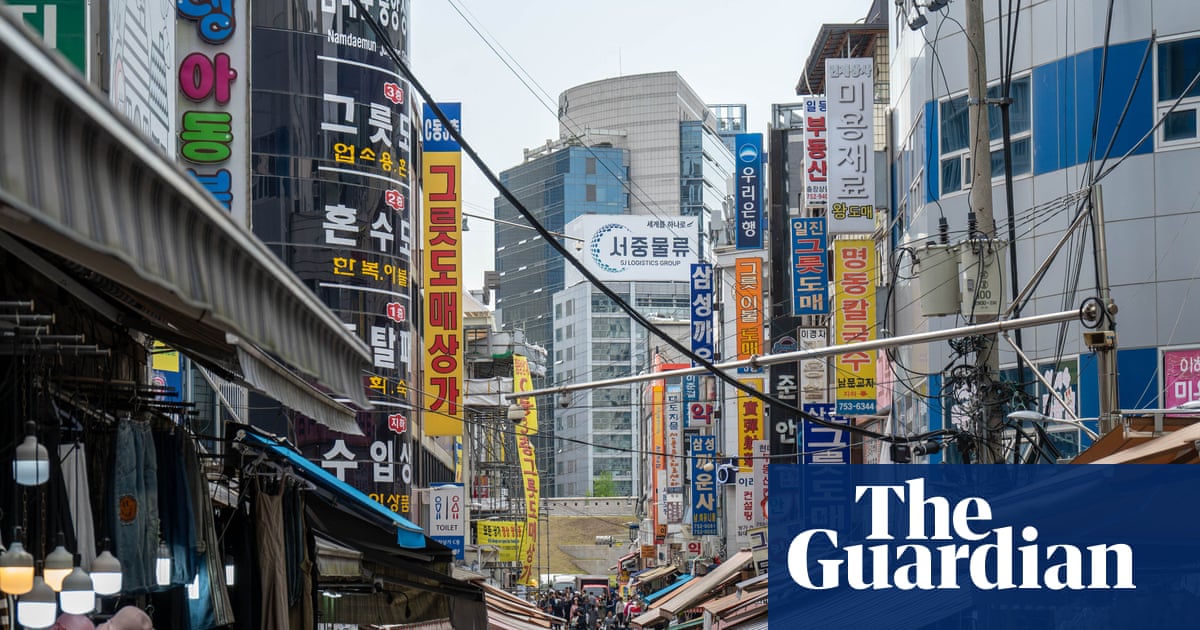Fostering Multiculturalism in South Korea: A Look Inside Gonjiam Middle School
At Gonjiam Middle School, the sounds of Russian resonate through the hallways as Luiza Sakhabutdinova, an assistant professor from Uzbekistan, engages a classroom of teenagers navigating the complexities of the Korean language. “How do you communicate with your Korean friends?” she inquires. The answers are hesitant; some students admit to using translation apps, while others depend on peers who have a stronger command of Korean. These ethnic Korean children hail primarily from former Soviet republics, finding themselves caught between two cultures in a country their parents chose for better opportunities.
Supporting Ethnic Korean Students in Gwangju
Luiza, who has been in South Korea for 17 years, is dedicated to helping Russian-speaking ethnic Korean students in Gwangju, a city near Seoul. Many of her students struggle with fluency in Korean, but they appreciate the support they receive. “I wish there were more lessons like this,” expresses Aleksei Niu, a 17-year-old from Russia who has been placed two years below his grade level.
The head teacher of Gonjiam Middle School, Hwang Byung-tae, shares success stories of former foreign students who have transitioned to teaching or advanced to university. “Many foreign students adapt well and thrive here,” he proudly states.
A Demographic Shift in South Korea
Traditionally, South Korea has embraced a cautious approach to immigration, valuing its ethnic homogeneity. However, the country is nearing a significant demographic milestone. As of June, there are 2.11 million foreign residents, comprising 4.1% of the population, inching toward the 5% mark that signifies a multicultural society.
This shift is largely driven by economic realities. South Korea’s fertility rate has plummeted to 0.75, the lowest globally, and projections indicate a halving of the working-age population by 2070. Additionally, young Koreans are increasingly shying away from jobs in manufacturing, agriculture, and construction—sectors heavily reliant on migrant labor.
To address these changes, South Korea is proactively shaping its demographic landscape through integration services and outreach programs aimed at fostering social cohesion and cultural unity.
Equal Opportunities for Migrant Children
Park Chang-hyun from the justice ministry’s immigration integration division emphasizes the government’s commitment: “We want migrant children to have equal opportunities in Korean society. Our goal is to help them adapt culturally so they can showcase their talents and capabilities.” This vision is reflected in schools like Gonjiam, where language support and mentoring are integral parts of the education system. The government has also designated specific areas as “multicultural zones” to focus on integration programs for various groups, including ethnic Koreans from abroad and Southeast Asian women married to Korean men.
Ansan: A Model for Multicultural Integration
Ansan, an industrial city located 25 km southwest of Seoul, serves as a prime example of South Korea’s multicultural efforts. Home to the Banwol and Sihwa industrial complexes, Ansan boasts a foreign national population of 14%, the highest in the country. In the Wongok-dong neighborhood, this figure skyrockets to 84%.
At Hope365, a nonprofit support center, early adaptation courses are offered in 18 languages, covering vital topics such as opening bank accounts, navigating healthcare, and understanding Korean laws. Volunteers provide meals for immigrant children and offer after-school tutoring.
Kim Myeong-soon, a Chinese-Korean mother, shares her experience: “My child loves it here and is receiving tremendous support. The children come from diverse backgrounds—Persian, Korean, Chinese—and despite language barriers, they bond over their different cultures.”
Challenges Amid Progress
Despite these positive strides, significant challenges remain. The “employment permit system” grants employers considerable power over foreign laborers, complicating their ability to escape exploitation or change jobs. Critics argue that South Korea’s approach often views foreign workers primarily as labor units rather than individuals seeking to build lives.
The tragic fire at a lithium battery plant in 2024, which claimed 23 lives, mostly of Chinese nationals, highlights the disproportionate risks faced by foreign workers. Furthermore, a disturbing incident involving a foreign worker being tied to bricks and lifted by a forklift led President Lee Jae Myung to decry it as a gross violation of human rights.
In Ansan, the same support center that provides integration classes also functions as a complaint office, addressing issues such as wage theft and workplace abuse.
The Path Forward for Integration
A 2024 survey by the Korea Institute for Health and Social Affairs (KIHASA) reveals that over 61% of Koreans now view foreign residents as a normal part of their neighborhoods. However, acceptance varies greatly depending on context and the type of migrant. While a significant majority supports child allowances for permanent residents, only 45.3% back such benefits for migrant workers.
Despite increasing acceptance in public spheres like workplaces, many migrants continue to face discrimination in daily life. The absence of comprehensive anti-discrimination legislation leaves them with limited recourse. A recent incident in Daegu, where opposition to a small mosque led to pigs’ heads being left at the site, underscores ongoing tensions.
KIHASA researcher YoonKyung Kwak notes that current integration efforts are “fundamentally one-sided,” focusing primarily on educating migrants rather than fostering understanding within the host society. “The real challenge is whether Koreans view migrants as equal members of society, not just temporary workers or economic tools,” she asserts. “Moving toward a genuine sense of shared community is crucial for meaningful integration.”
Conclusion
As South Korea continues to navigate its evolving demographic landscape, the need for a comprehensive, inclusive approach to multiculturalism becomes increasingly pressing. By fostering understanding and acceptance among all residents, the nation can build a more harmonious and integrated society for future generations.










